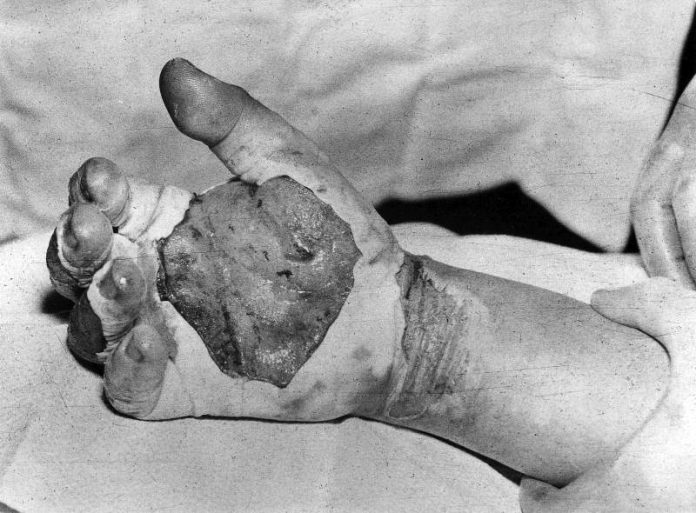
American scientist Harry K. Daghlian was fatally irradiated while handling the nucleus of a nuclear bomb on August 21, 1945. It was the first accident of its kind in world history. Daghlian died from the effects of radiation 25 days after the accident, despite being provided with intensive medical care in the meantime.
The accident occurred during his experiment with a nuclear nucleus made of plutonium and gallium, in the Los Alamos laboratory in the US state of New Mexico. Daghlian has been involved in the famous Manhattan project since 1944, which resulted in the production of the first nuclear bomb in world history.
The said core, which lethally irradiated Daghlian, weighed 6,200 grams and had the shape of a sphere with a diameter of 89 millimeters. It was intentionally made with a mass only about 5% less than critical (required to enter the nuclear fission chain reaction). On that day, Daghlian experimented with neutron deflectors in the form of tungsten carbide bricks, which bounced neutrons back toward the nucleus. During the manual stacking of the bricks around the core, the last of them accidentally fell on the assembly and brought the system to a supercritical state (there was a chain reaction of atom splitting).
To prevent a major accident, Daghlian quickly set out to dismantle the pile of bricks, but was lethally irradiated. He received a dose of as much as 5.1 sieverts in the accident, approximately the same as a person who would perform an X-ray examination of his arm 5,100,000 times. Its received dose was as much as 100 times higher than the maximum allowed annual dose for people working with radioactive substances. Nine months later, another scientist, Louis Slotin, was fatally irradiated while handling the same nucleus.




